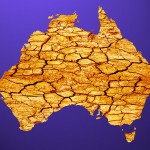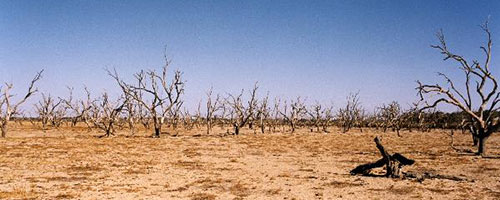Hottest years will soon be the new normal
LONDON, 20 NOVEMBER, 2016 − Australian scientists have warned that the world’s hottest years on record, 2015 and 2016, could become the new normal for the planet as early as 2025, if humans go on burning ever more fossil fuels.
Even if humans take steps to reduce greenhouse gas emissions, these high global temperatures will become normal by 2040. If, by 2035, they have not taken those steps, Australia, in particular, could be experiencing what so far have been record temperatures almost every year.
In a second study, Australian researchers warn that extreme heat waves and bushfires are already on the increase and will become more extreme with the decades.
Hottest years
Last year was, on average, the hottest year the world had ever experienced. Australia’s hottest year was 2013. Sophie Lewis of the Australian National University, and colleagues, write in the Bulletin of the American Meteorological Society that according to their calculations, the new and ever-higher global average temperatures are “locked in” by human activities already taken. But strong action taken now could still reduce the worst impacts for individual regions of the planet.
“If we continue with business-as-usual emissions, extreme seasons will inevitably become the norm within decades and Australia will be the canary in the coal mine that will experience this change first,” says Dr Lewis.
“That means the record-breaking hot summer of 2013 in Australia – when we saw temperatures approaching 50°C in parts of the country, bushfires striking the Blue Mountains in October, major impacts to our health and infrastructure and a summer that was so hot it became known as the ‘angry summer’ – could be just another average summer season by 2035.”
“Australia will be the canary in the coal mine
that will experience this change first”
If on the other hand the nations of the world opted to reduce emissions drastically, then this “new normal” might be delayed beyond the end of the century.
 But that doesn’t mean an easy ride for the Australians later this century: climate change has already begun to hit the world’s largest island. It drove the catastrophic floods of 2010; it has led to the worst ever damage to the Great Barrier Reef and more violent storms could arrive as the thermometer rises. Climate change could make life more difficult for the nation’s most iconic marsupial, the koala and higher temperatures have already imposed losses on the Australian economy.
But that doesn’t mean an easy ride for the Australians later this century: climate change has already begun to hit the world’s largest island. It drove the catastrophic floods of 2010; it has led to the worst ever damage to the Great Barrier Reef and more violent storms could arrive as the thermometer rises. Climate change could make life more difficult for the nation’s most iconic marsupial, the koala and higher temperatures have already imposed losses on the Australian economy.
Heat waves and bushfires
But in a special issue of the journal Climatic Change, Seth Westra of the University of Adelaide says that temperature-related hazards –in Australia that means heat waves and bushfires – seem certain to become more extreme. Heat waves have caused more than half of all natural disaster-related deaths in Australia. Fires over the last decade have scorched a million hectares, claimed more than 200 lives, and incinerated 4,000 homes. Cyclones could become less frequent – but paradoxically more intense. The outlook for flooding is uncertain.
“One thing that became very clear is how much all these hazards are interconnected. For example, drought leads to drying out of the land surface, which in turn can lead to increased risk of heat waves and bushfires, while also potentially to a decreased risk of flooding” said Dr Westra. – Climate News Network








